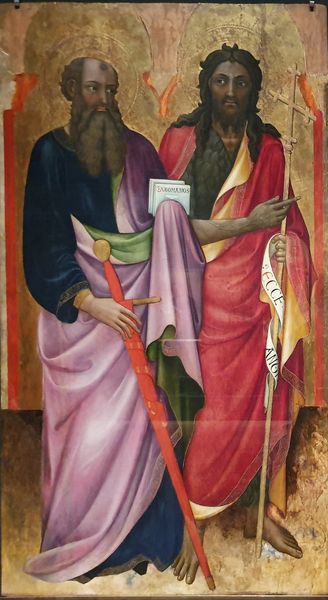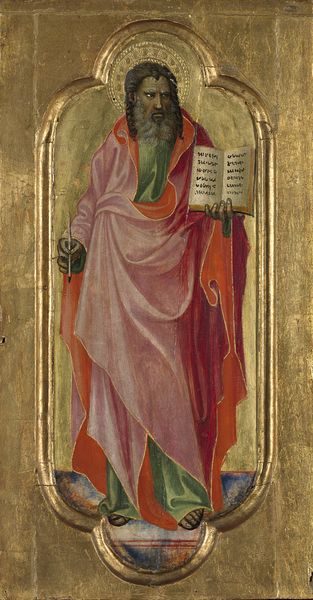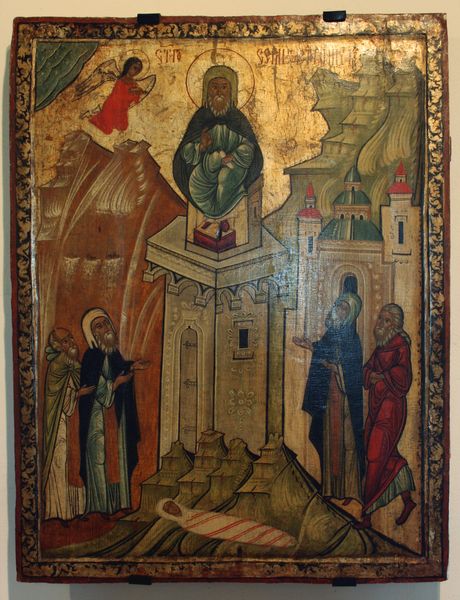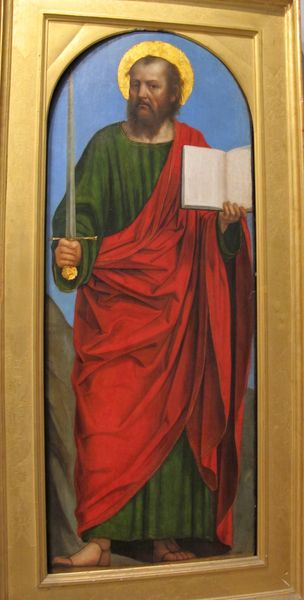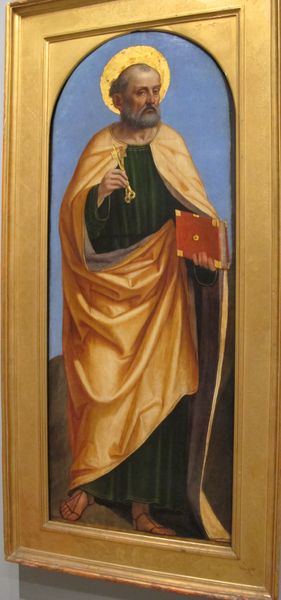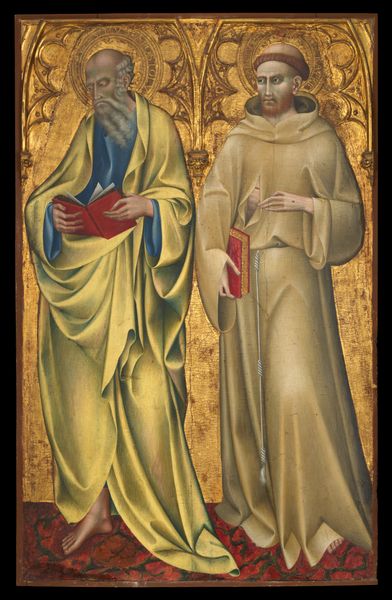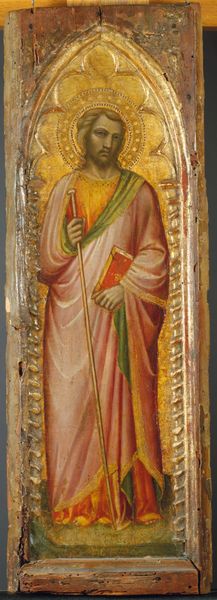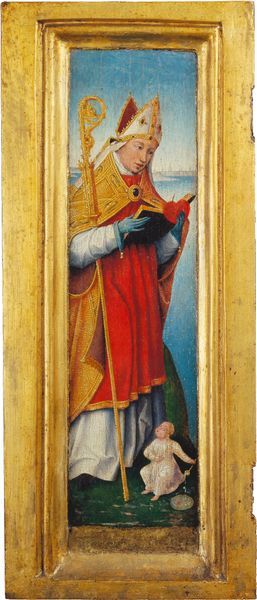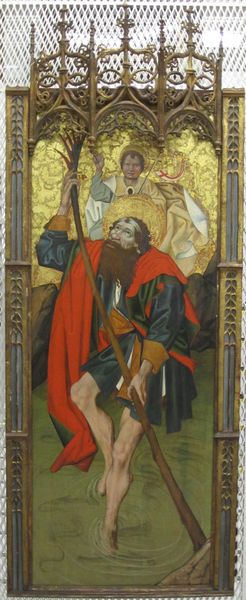
tempera, oil-paint
#
portrait
#
medieval
#
tempera
#
oil-paint
#
handmade artwork painting
#
oil painting
#
history-painting
#
portrait art
Copyright: Public domain
Álvaro Pires de Évora painted Santo André E São Pedro using tempera on wood sometime in the early 15th century. Tempera is a traditional technique involving powdered pigments mixed with a binding agent, often egg yolk. The selection of colors is crucial as it impacts the spiritual reading of the work, while the gold leaf symbolizes divinity and holiness. Applying gold leaf is a delicate and skilled process, requiring layers of gesso as a base, followed by careful application and burnishing. The process of tempera painting is labor-intensive and demands precision. Each layer of paint must be applied thinly, and the colors are not easily blended, necessitating a methodical approach. The texture is smooth and matte, and the colors retain their brilliance over centuries, demonstrating the artist's mastery and the inherent qualities of the materials. By understanding these processes, we recognize that this painting represents a convergence of artistic skill, material knowledge, and cultural values, challenging any strict separation between craft and fine art.
Comments
No comments
Be the first to comment and join the conversation on the ultimate creative platform.
